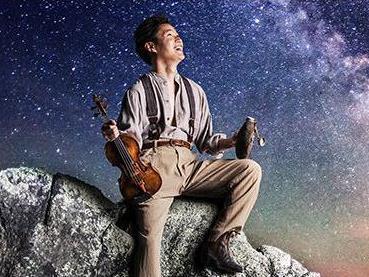Mystical, image via The Camerata of St. John’s.
The Camerata of St. John’s popular Mystical concert program is now in its tenth year in the atmospheric grandeur of St. John’s, a venue well-suited to chamber music and the baroque repertoire. Seemingly well-positioned in the round in the centre of the nave with audience seated on four sides, a greater interaction between musicians and audience was anticipated. Abundant candles and mood lighting assisted this sense of mystique. Unfortunately the orchestra’s positioning ultimately proved unsatisfactory both in terms of the acoustic, as well as viewing musicians who predominantly had their backs to the audience. Regrettably it was also impossible to see any of the soloists or their instruments throughout the concert, even from the front row, creating alienation rather than intimacy.
Handel’s beautiful Concerto Grosso in A Minor opened the evening, an unlikely piece as it did not easily fit the theme of ‘mysticism’ being written as a bright and breezy intermission piece for his oratorios and operas. Commencing a little shakily with the tempi in the first two movements sluggish, the full instrumentation produced a muddy acoustic, with delivery not as crisp or sharp as one would have liked. It is probable that orchestral positioning did not assist this, as the fullness of sound was being played away rather than towards the audience. The final two movements worked better however, some good instrumental colour emanating from violin and cello solos, demonstrating the musical intensity of the soloists within the ensemble.
Contemporary Israeli composer Avner Dorman’s Concerto Grosso was the second piece with Dorman taking Handel’s theme to another level, giving full rein to the excellent soloists of the Orava Quartet. This dark, dense piece with ‘mystical’ overtones dovetailed neatly with Handel’s lively work, both string quartet and harpsichord producing first-rate solos with some delicate phrasing. The pizzicato work by the ensemble strings lent an immediacy that was both rhythmic and exciting.
Queensland-based composer, Paul Kopetz, premiered his new work Night on Karragarra for strings alongside an oboe solo sensitively played by Eve Newsome. Part of a larger suite of works for strings and solo woodwind, each describes a different Moreton Bay island. Karragarra Island is seen as an idyllic location for a summer picnic though the composer’s work was mostly concerned with night, musically demonstrating nocturnal creatures at play. This charming, lyrical composition sonically recreated a diverse range of night sounds, both mystical and fearful. Rising above the foreboding strings, the haunting melody of the oboe vividly painted aural pictures of the animals that was both joyous and immensely satisfying.
Modern American composer, John Adams’ mighty work Shaker Loops was the centerpiece of the evening, the modern, minimalist work acoustically perfect for the venue. An insistent, unrelenting rhythm is the backbone of the first and later movements, each instrument seemingly playing contrasting notes that fuse into fluid layered sounds. The result is sometimes a mixture of high pianissimo notes followed by dark strident bass sounds leading to elements of musical chaos. This is complex repetitive music that involves many twists and turns which the ensemble played exceptionally well, with great precision and focus. It was a very fine rendition of the work.
The final piece of the evening was the second movement of Gorecki’s 3rd Symphony, Lento e Largo, glorious ethereal music that soared into the lofty heights of the Cathedral assisted by the ravishing soprano of Natalie Christie Peluso. Her voice filled the space but still had a sweetness of tone that was ably supported by the gentle accompaniment of the strings. It was a delightful way to end the program. Another piece with soprano would have been most welcome as it was perfect acoustically.
The Mystical program was billed as a ‘visual and auditory feast in an extraordinary space!’ While the space was mystical, both visually and aurally the program was mixed, not engaging as well as it might, though the second half of the program certainly redeemed earlier issues. It was still disappointing that we were unable to watch the soloists at work or even see the faces of the musicians and consideration should be given to staging in another configuration in this venue in the future in order to fully create the requisite intimacy and magic.
Rating: 3 ½ stars out of 5
Mystical
The Camerata of St. John’s
Leader: Brendan Joyce
Soloists Brendan Joyce, Jonny Ng and Katherine Philip
Orava Quartet
Soprano Natalie Christie Peluso
Oboe Eve Newsome
St. John’s Cathedral, Brisbane
14 October 2016





